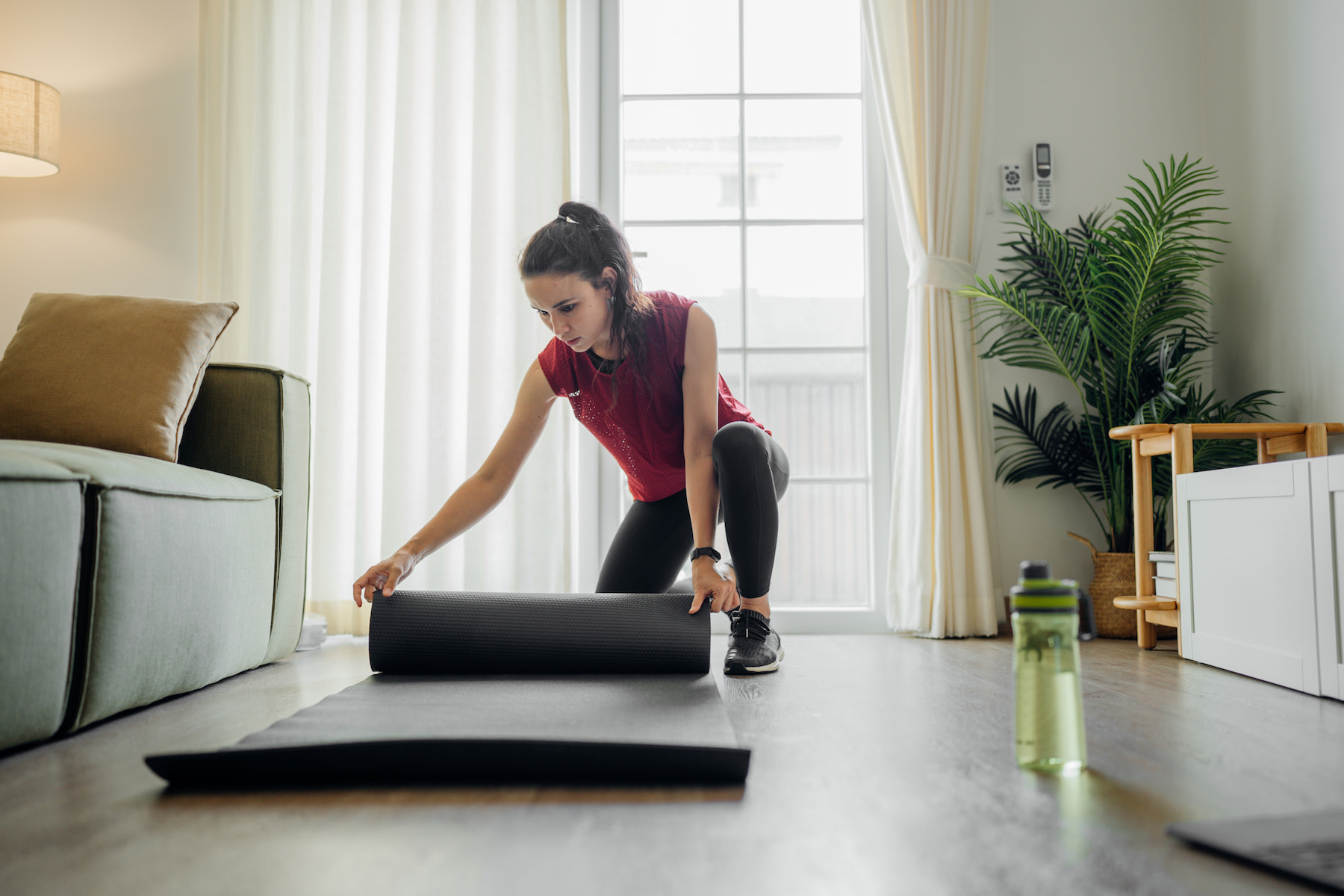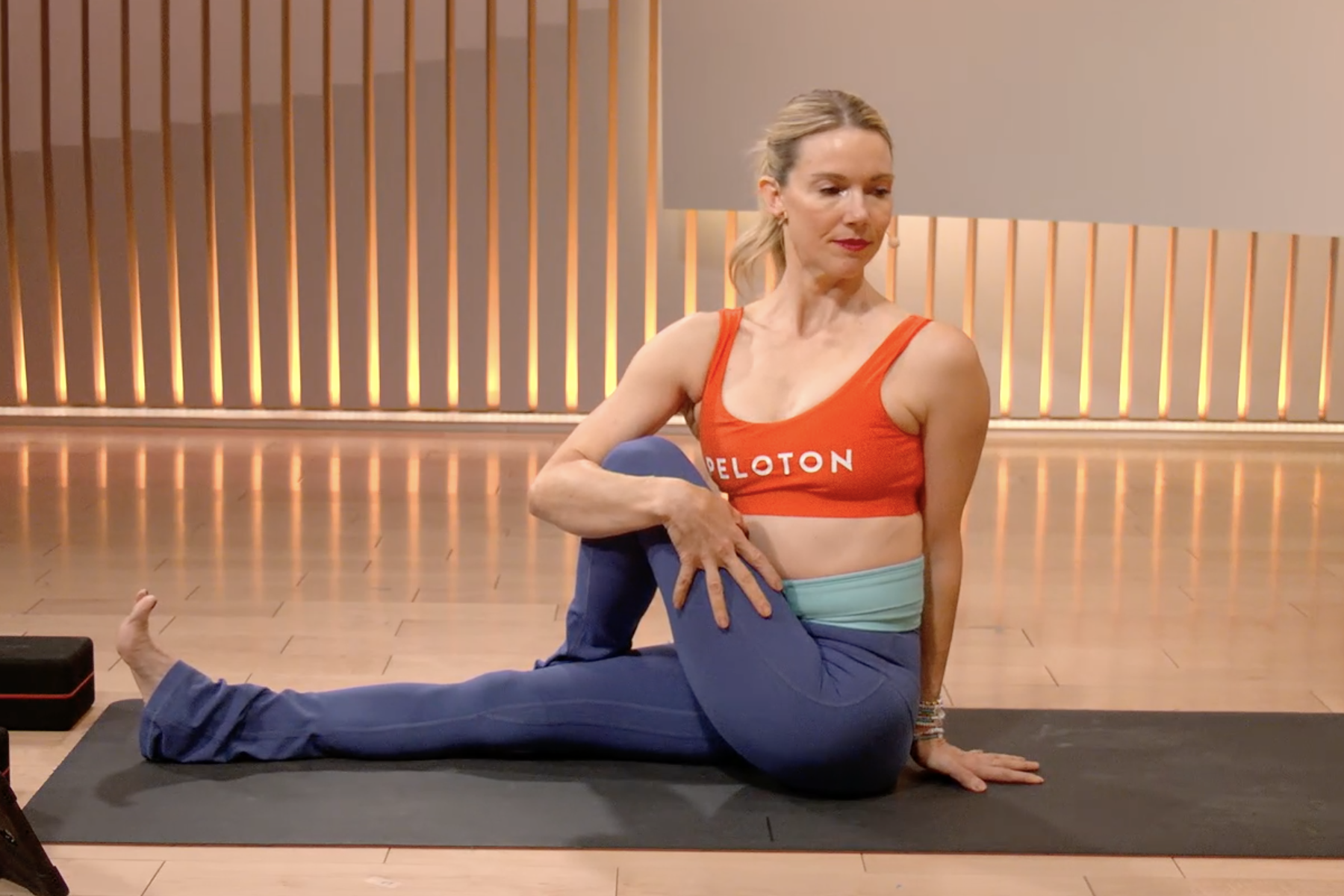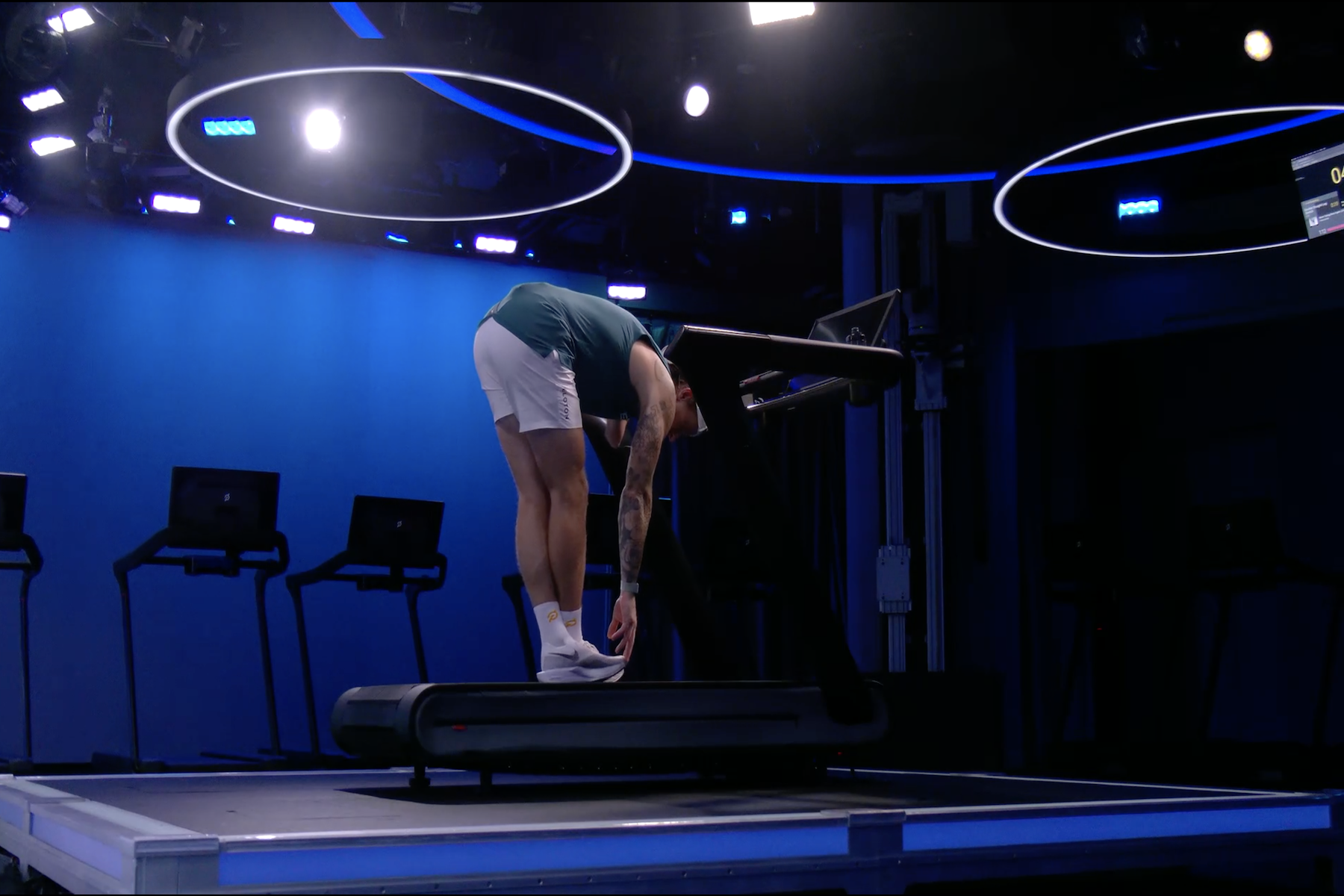
staticnak1983/E+ via Getty Images
5 Yoga Poses Every Cyclist Should Be Practicing
It may just be the secret to unlocking that output goal.
By Peloton•
Why Cyclists Need Yoga
How to Incorporate Yoga Into Your Training Schedule
Best Yoga Poses for Cyclists
Yoga and cycling may not seem like an obvious combination, but it’s truly a beneficial partnership. By balancing your cycling workouts with a regular yoga practice, you allow your body to recover, so your next ride can be that much better. Plus, regular stretching can help you increase your range of motion, as well as improve your flexibility.
Why Cyclists Need Yoga
If you’re a cyclist, you may think cycling is the world’s most perfect sport: You’re building strength, endurance, and aerobic fitness through a low-impact activity. What more could you want? Well, for starters, variety. With cycling, you’re stuck in the same seated position for long stretches of time, so not all your muscles are getting a great workout. And that repetitive motion can lead to tightness in certain areas that make you more prone to injury. Enter: Yoga.
Yoga Increases Flexibility
The time you spend sitting in the saddle is great for your cycling skills—but less than optimal for your muscles, which may become tight and stiff due to the repetitive motion. “Tightness in the hips and glutes can lead to muscle imbalances and incredible discomfort in your day-to-day life,” says Hannah Corbin, a Peloton instructor. “Finding length here can relieve lower back pain, which will take a load off your mind as well.” A 2016 study published in the International Journal of Yoga found that athletes who took 10 weeks of yoga classes, twice a week, had measurable increases in their hip, lower back, and hamstring flexibility.
Yoga Builds Core Strength
When you cycle, the downward stroke of the pedal engages your glutes and quads. Once you hit the bottom of your stroke, you activate your hamstrings and calves. As a result, you’re engaging all of your major leg muscles—over and over and over again. However, you’re not doing the same to your core, which is essential to counteracting the stress placed on your back during your rides. Most yoga poses require some degree of core engagement, making them a great complement to cycling.
Yoga Helps Reduce Your Risk of Injury
Yoga may also help you avoid getting injured. A 2022 study published in the International Journal of Environmental Research and Public Health found that collegiate athletes who regularly participated in yoga had better functional movement while playing their sport, potentially lowering their risk of injury. Additionally, a 2020 study published in the International Journal of Yoga found that a regular yoga practice helped decrease fatigue and injury rates among soccer players.
Yoga Improves Breathing
If you’re a cyclist, you know how important it is to practice relaxed breathing. A steady breath helps you control your heart rate and efficiently deliver oxygen to your working muscles. A 2012 review published in Sports Medicine found that exercisers who practiced respiratory muscle training (i.e. breathing exercises) had better endurance than those who didn’t.
Yoga can help you learn beneficial breathing techniques to use on and off your Peloton Bike, strengthening both your lungs and heart, and subsequently making it easier to go longer and harder in your cycling classes.
How to Incorporate Yoga Into Your Training Schedule
There is no right or wrong way to work yoga into your cycling routine. Take into consideration your fitness level, how many days a week you’re cycling, and the intensity of your workouts. There are also different types of yoga to test out. In general, though, if your cycling routine includes five training days and two rest days, it may be beneficial to incorporate a restorative yoga class on one or both or your rest days to give your muscles a gentle stretch.
Best Yoga Poses for Cyclists
Overwhelmed by the number of yoga poses? It’s understandable. Below, we break down five key poses that will stretch and strengthen the muscles you use while cycling. Plus, all of them engage your core muscles.
Low Lunge (Anjaneyasana)
This posture helps open up your hip flexors, a common area of tightness for many cyclists.
Start in a Downward-Facing Dog.
Lift your right foot off the ground, bend your right knee, and carry your foot forward until you place it between your hands. Keep your right knee stacked directly above your right foot.
Step your left foot back and lower your left knee to the floor. Allow the top of your left foot to press into the floor.
Lift your torso and raise your arms overhead to feel a stretch in your shoulders. (You can also opt to keep your hands on either side of your right foot.) Breathe in and out for 10 counts.
Repeat on the opposite side.
Muscles stretched: Quads, hip flexors

Seated Spinal Twist (Ardha Matsyendrasana)
This movement stretches your glute muscles, which can get especially tight during cycling workouts.
Begin in a seated position on the floor with your knees bent and feet flat on the floor. Let your left leg drop to the floor so that the outside of your left knee touches the ground. (You can also opt to keep your left leg straight.) Cross your right foot over your left leg. Place your right foot on the outside of your left knee. Your right knee should point up to the ceiling.
Carefully twist your torso to the right. On an inhale, raise your left arm to the ceiling. On an exhale, lower your arm and place it on the outside of your right knee.
Turn your head to the right, aiming to look past your right shoulder. Inhale and exhale for 10 counts. With every exhale, try to gently deepen the stretch.
Repeat on the opposite side.
Muscles stretched: Glutes, lower back, upper back, erector spinae muscles

Cat Pose (Marjaryasana) and Cow Pose (Bitilasana)
This familiar pair of poses can provide deep relief for your lower back muscles.
Begin on all fours. Stack your knees directly underneath your hips, and your wrists below your shoulders. Keep your spine in a neutral position. Allow the tops of your feet to rest on the floor. Face your fingers forward and spread them wide.
Exhale and round your spine toward the ceiling, feeling your stomach hollow out. Look toward the floor.
Inhale and arch your back, raising your head and butt toward the ceiling as you drop your chest toward the floor.
Return to a neutral position.
Muscles stretched: Lower back, upper back, neck, chest, abdominals

Standing Forward Bend Variation (Uttanasana)
This variation on a classic posture engages your tight hamstrings and calves, and allows you to stretch out your IT band.
Stand with your feet together and arms by your sides. Cross your right ankle over your left, placing your right foot on the outside of your left foot.
Hinge forward at your waist, lowering your arms to the ground.
You should feel the stretch in your left hamstring, calf, and IT band. For an even deeper stretch in your left leg, slightly bend your right leg.
Round your spine and slowly roll up back to standing. Repeat on the opposite side.
Muscles stretched: Hamstrings, iliotibial band, calves
Upward Plank Pose (Purvottanasana)
This posture helps counteract the stress placed on your back and spine from cycling.
Begin in a seated position with your legs stretched out in front of you. Press your hands into the floor behind your back. Your fingers should face forward.
On an exhale, press your feet and hands into the ground as you raise your hips toward the ceiling. Allow your head to shift back so that your eyes face upward.
Keep your hips elevated, and your chest lifted. Gently squeeze your shoulder blades back and down.
Breathe in and out for 10 counts.
Muscles stretched: Chest, hip flexors
Level up your inbox.
Subscribe for a weekly dose of fitness, plus the latest promos, launches, and events.







